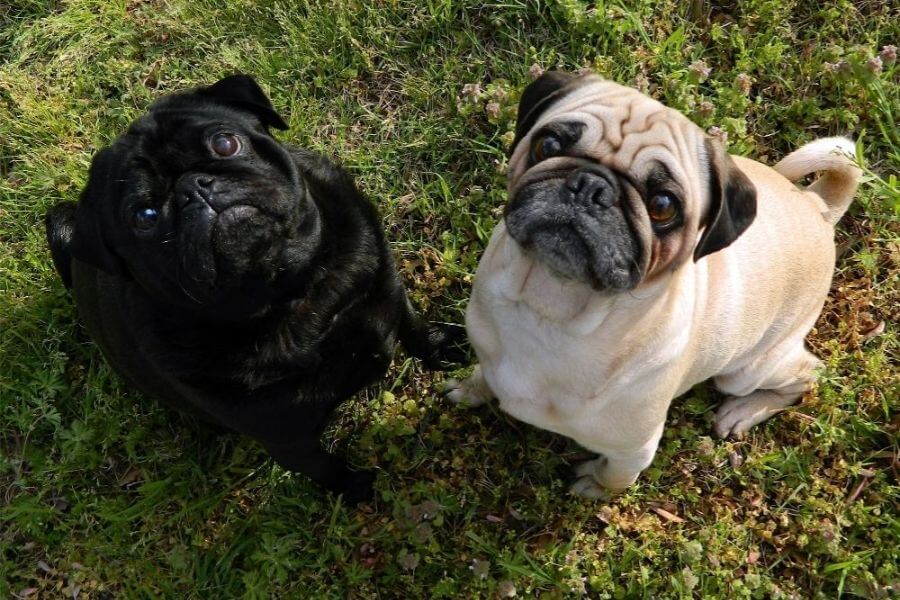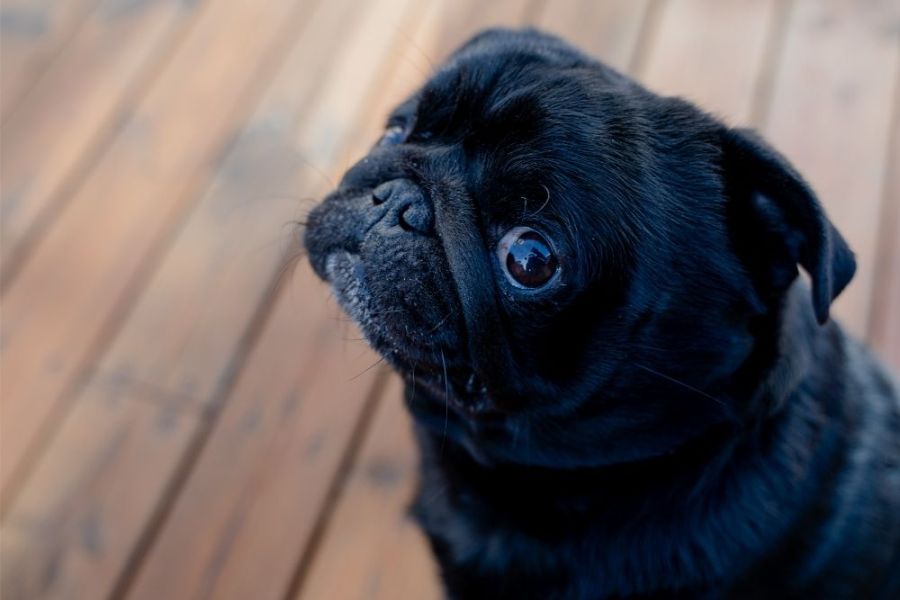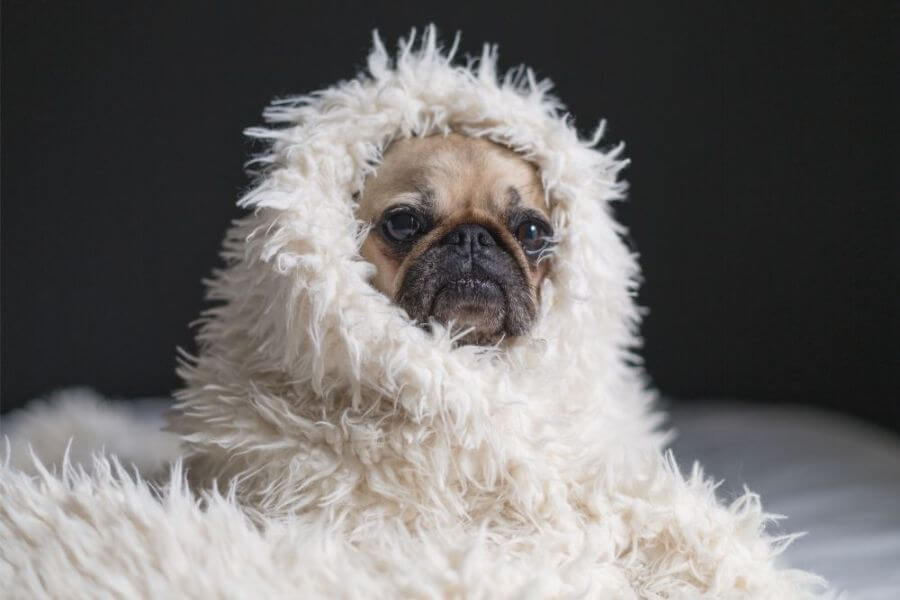Pug Puppies For Sale


Table of Contents
No List Found Puppies
Pug Puppies For Sale
All of our puppies at William Goh’s pet farm come with a free deworming, microchip, vaccination & health check.
Pug that found a loving home



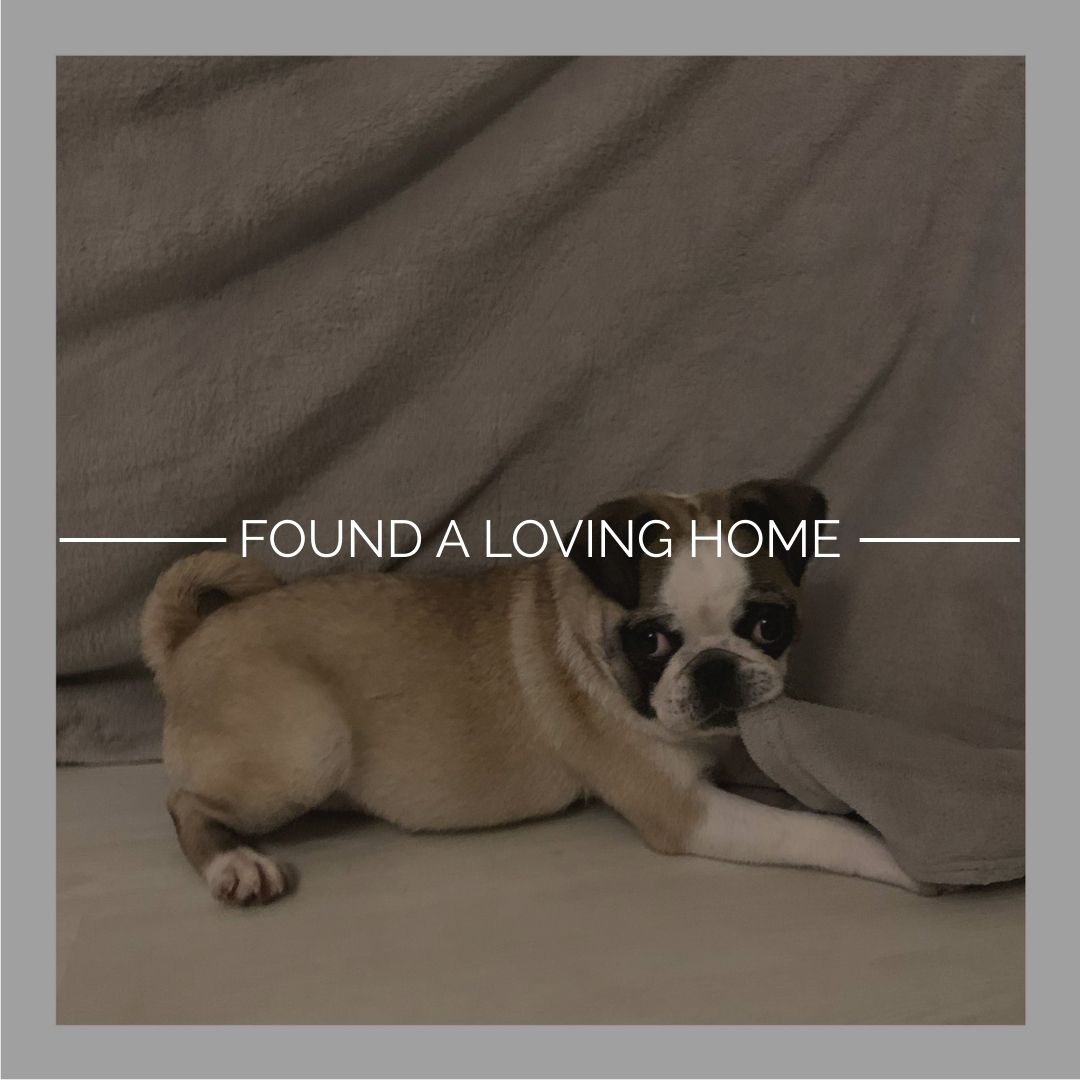
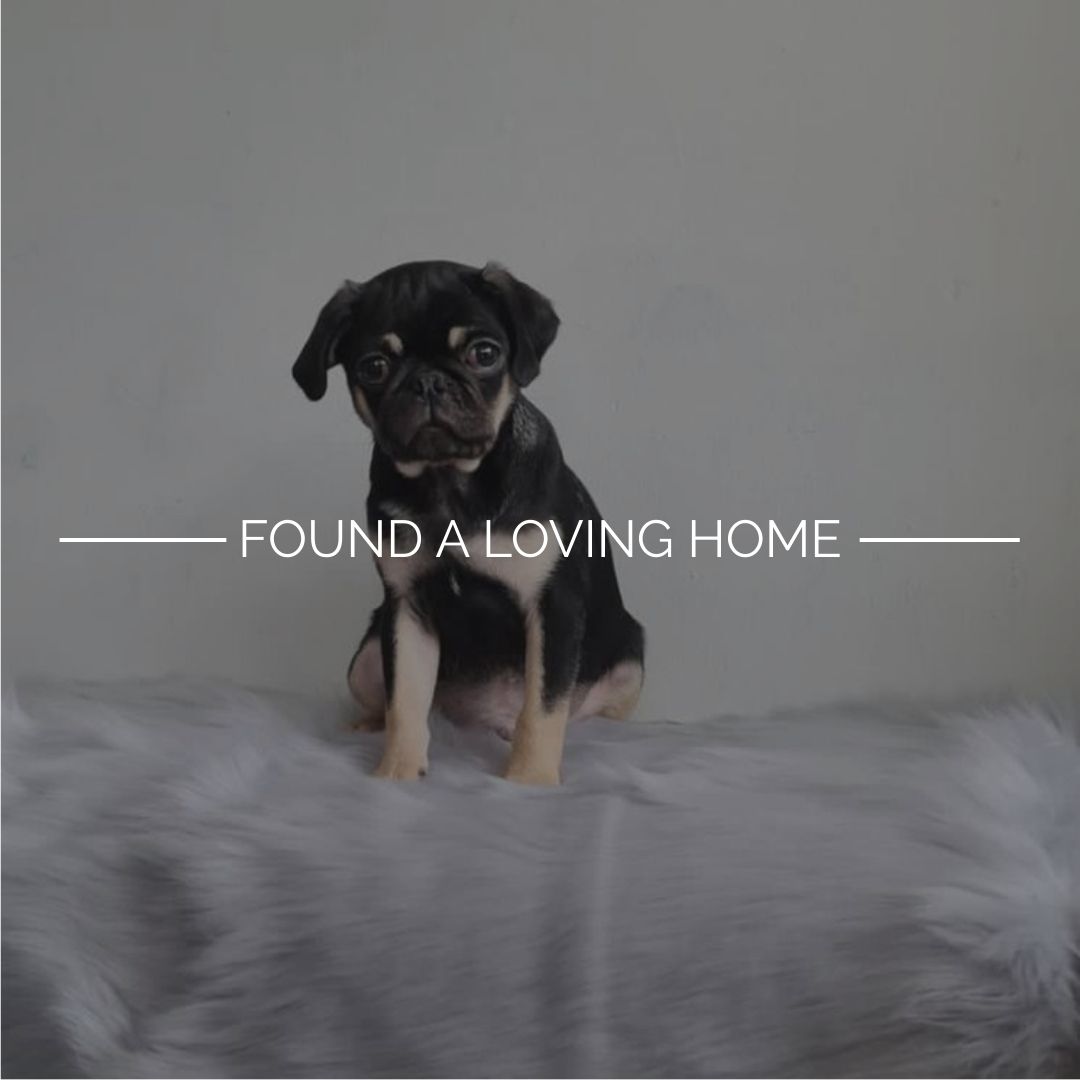
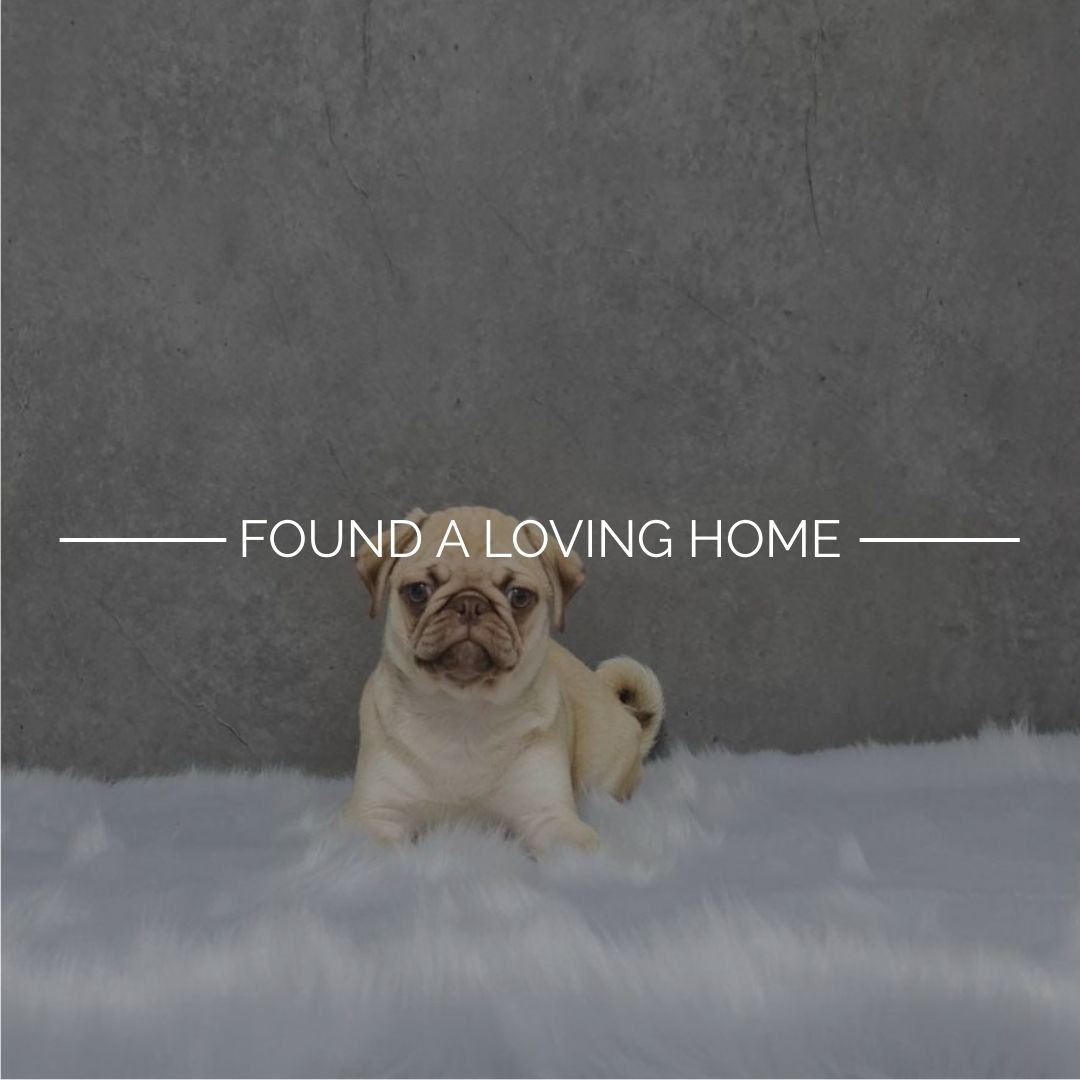
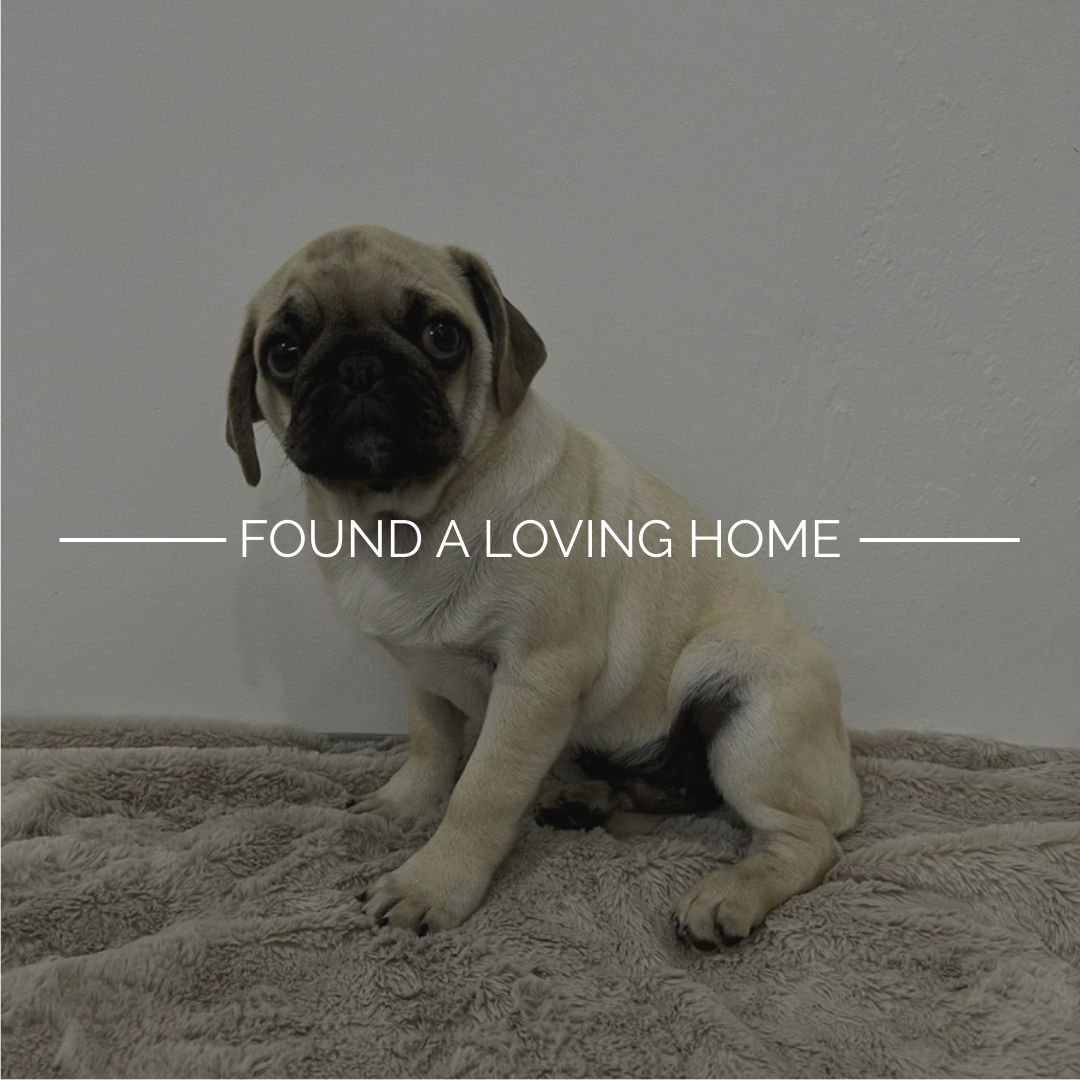
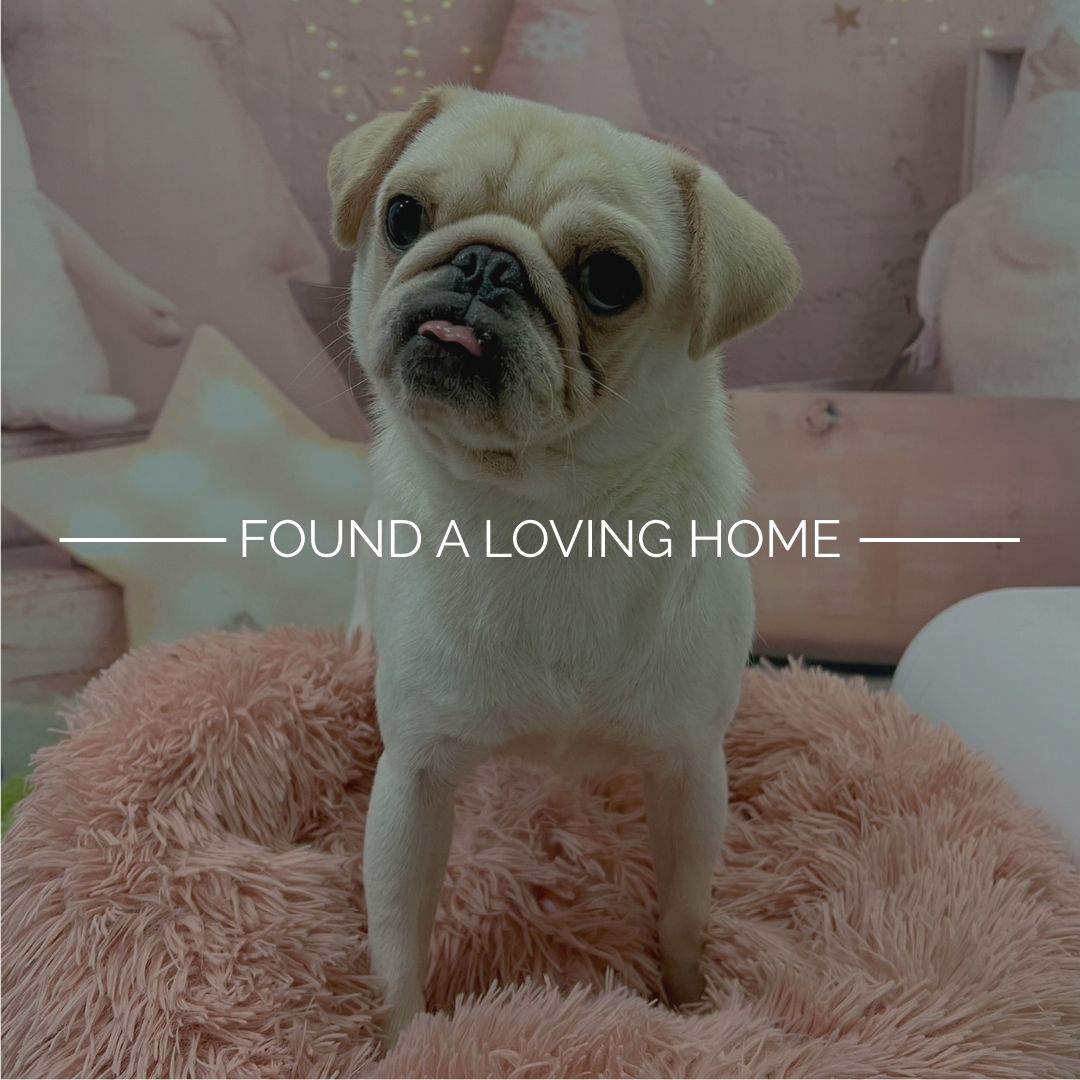
Use Web Whatsapp? Click Here
Introduction
They were originally developed as lap dogs, designed to sit on the Emperor’s lap and offer affectionate companionship.
Their name comes from the Latin word “pugnus,” meaning fist, which resembles their wrinkled face.
Here are some popular pug puppies for sale in Singapore and Malaysia.
In fact, these playful dogs were so valued in ancient China that they were guarded by soldiers, making them one of the most exclusive pet breeds.
Pugs are extremely sociable and make perfect pet companions.
They tend to snort and snore due to their short-muzzled face, but are gentle with children.
If you’re looking for a loyal, affectionate, and humorous furry friend that requires moderate exercise, a pug may be the right dog for you.
If you’re looking to adopt pug puppies for sale, read on.

Highlights
Breed Information
Weight (male) : 6-8 KG
Weight (female): 6-8 KG
Life Expectancy: 12-15 years
Group: Toy Group
Temperament
Playful
Friendly
Charming
Mischievous
Loyal
Characteristic
Moderate Energy Level
Sturdy and Compact Build
Expressive and Adorable Face
Intelligent but Sometimes Stubborn
They’re characterized by their compact bodies, short snouts, and prominent eyes, making them adorable companion dogs.
Due to their shortened muzzle, pugs are prone to health issues like breathing difficulties and can easily get overheated, especially in hot weather.
Pugs require regular oral hygiene and teeth cleaning to prevent dental problems, as their wrinkles also need routine cleaning to avoid skin irritation.
This breed is perfect for apartment living: pugs don’t need much exercise though they still have moderately high energy and love playtime.
Owning a pug can be incredibly rewarding, as they’re sociable dogs with a lot of personality.
They make gentle companions for families, entertaining you with their humorous antics while being even-tempered enough to get along with children and other pets.
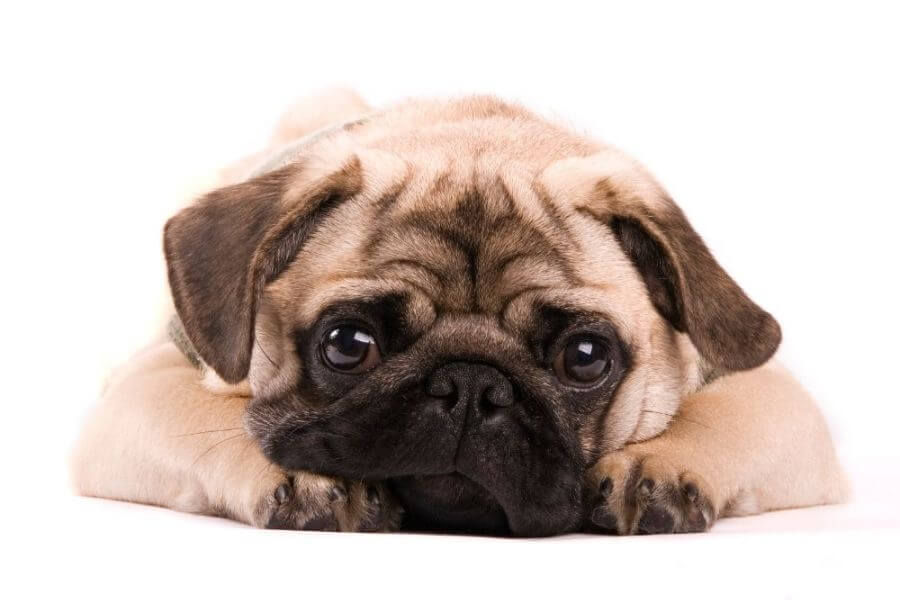
Grooming
Grooming a pug puppy is essential to maintain their health and cleanliness. These little dogs require regular brushing to manage shedding and prevent debris from collecting in their wrinkles.
Bathing your pug should be limited to once every 4-6 weeks, as over-bathing can strip their fur of natural oils, potentially causing dry skin and infection.
Take note that pugs need special attention to their wrinkles and snout, which should be cleaned regularly with cotton to prevent yeast infections.
Their dental cleaning is crucial too – brush their teeth several times weekly to avoid tooth issues common in this popular breed.
Many pug owners choose to visit a professional groomer for nail trimming and ear cleaning, especially if your pug puppy shows stress during these procedures.
Proper grooming makes your pug a more comfortable companion dog and helps prevent health complications.
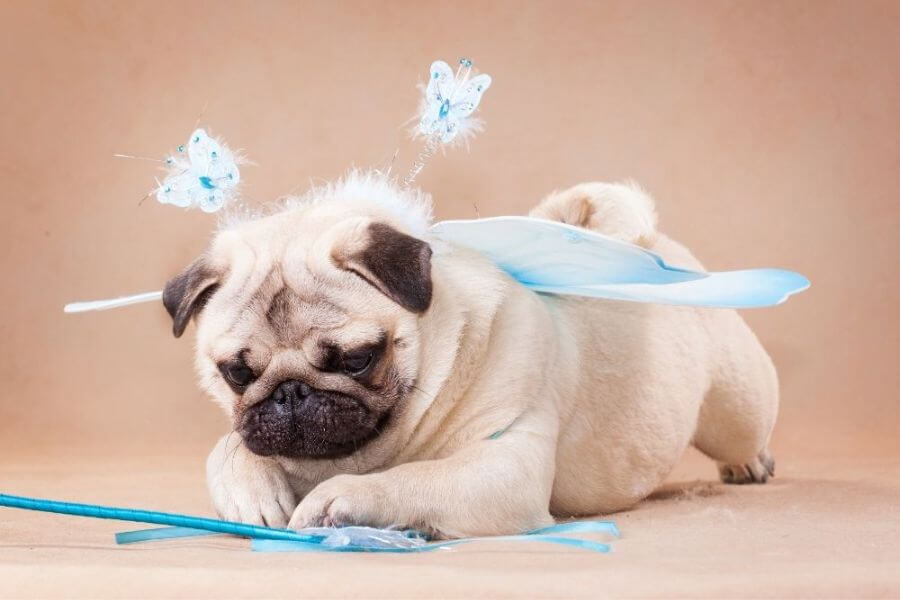
Personality
Pugs are delightful, charming, and incredibly affectionate companions that bring joy to any home.
These playful pups are known for their loving nature, sociable personality, and comical expressions, especially during their infamous zoomies.
While they may occasionally be stubborn during potty training, their desire to please makes them relatively easy to train when rewarded with plenty of praise.
Pugs thrive on human interaction and make gentle companions for families with children, though proper socialization is essential for a well-adjusted pup.
Despite their small size, they have a lot of energy and love to entertain with their playful antics, though they’re equally content being a lap dog during quiet evenings.
New puppy checklist items should include pet insurance, proper diet nutrition, and regular vet visits to monitor common breed characteristics like breathing issues and wrinkle care.
Remember that this breed is also prone to heat sensitivity, so maintain a stress-free environment with proper grooming and health monitoring.

Temperament
Despite their small stature, these silver-coated charmers have big personalities and love being the center of attention in their home.
Pugs are exceptionally patient with children and can adapt well to various living situations, including HDB approved breeds for Singapore residents.
They may occasionally display stubbornness during leash training or housebreaking, but their desire to please typically outweighs any willfulness.
While they can be prone to health concerns like breathing fast, eye infections, or hip dysplasia, responsible breeders ensure proper vaccination and health screening.
Pugs do shed and require regular grooming, including tooth brushing to prevent dental issues as they age.
Their life expectancy of 12-15 years means they’ll be a member of the family for many joyful years.
Though they may snore or wheeze due to their short snouts, these toy dogs compensate with their affectionate nature.
Separation anxiety can be an issue, so crate training is recommended early on.
Pugs thrive on human interaction and will reward you with countless antics that showcase their unique humor and gentle companionship.

Size
Many prospective pet owners fall in love with a Pug’s gentle companion qualities and humour, but understanding their size requirements is essential for proper dog ownership.
The average Pug weighs between 6-8 kg (14-18 pounds) and stands about 10-12 inches at the shoulder.
Pugs come in fawn or black varieties, with their compact, sturdy bodies making them ideal for families with children.
Despite their small stature, Pugs require regular dog grooming to maintain healthy skin and prevent yeast infections.
They may be prone to certain health concerns including shortness of breath, reverse sneezes, and cherry eye.
As popular breeds with distinctive snoring and occasional dog farts, Pugs need proper feeding (about 800 calories daily) and should be vaccinated against parvo virus and other diseases.
Responsible breeders ensure Pugs are dewormed, microchipped, and given proper veterinarian care before sale.
Looking for a pet with personality? A Pug’s teething antics and tendency for licking paws will provide endless entertainment given the chance!
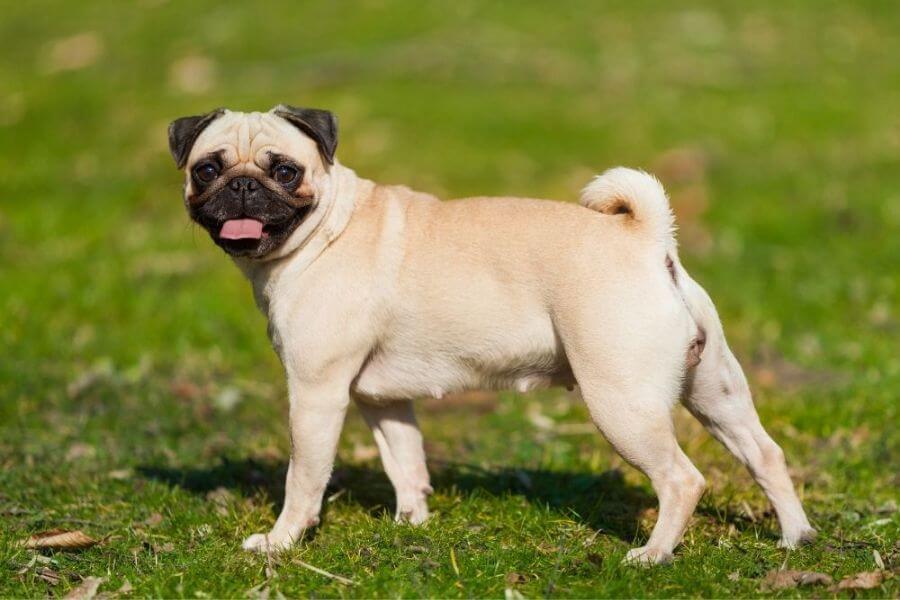
Upkeep
These adorable little dogs with their squished faces may look low-maintenance, but they also require dedicated care to keep them healthy.
Your Pug’s distinctive facial structure means they can develop breathing difficulties, especially in hot weather, so watch for excessive panting which could indicate distress.
Pugs are prone to eye gunk buildup due to their prominent eyes, requiring daily gentle cleaning.
You’ll need to clean their ears regularly and keep facial folds dry to prevent yeast infection.
Grooming is essential despite their short coat – they shed significantly and benefit from weekly brushing and occasional bathing with dog-specific shampoo.
Contact your breeder or visit a pet shop for recommendations on the best dog food for your Pug puppy, as proper nutrition helps prevent issues like bloating, diarrhea, or constipation.
Be vigilant about potential health concerns including fever, vomiting, pale gums, or blood in poop, which warrant immediate veterinary attention.
Pugs require complete vaccination schedules and should be protected against fleas, ticks, and heartworm.
Consider spaying or neutering your pug to prevent unwanted pregnancy and certain health issues.
Training is crucial as these intelligent dogs can develop behaviors like excessive barking or biting.
Introduce your puppy to children and other pets gradually – they typically make an excellent pet companion for families.
With proper care and attention to their unique needs, your Pug puppy will reward you with their amusing antics and affectionate nature for years to come.
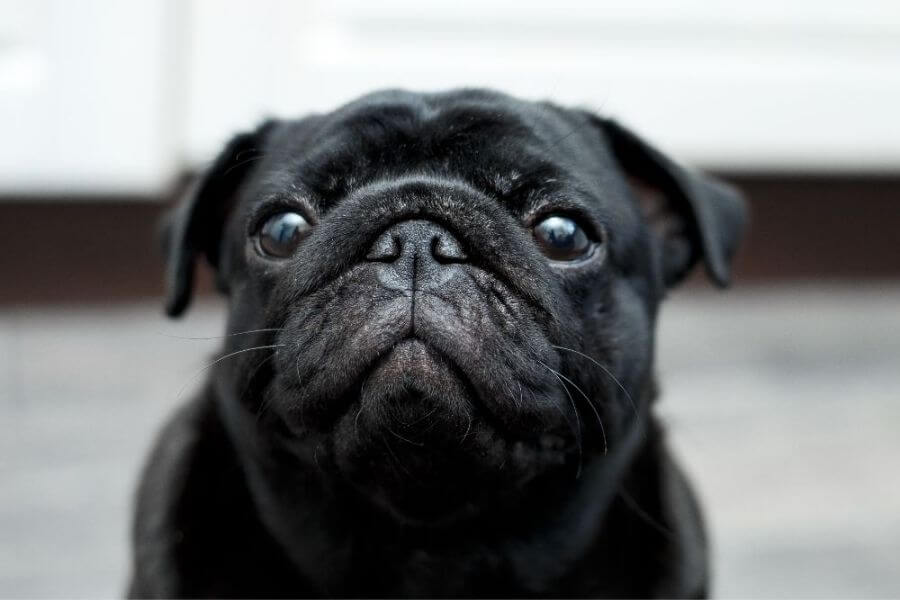
Health
While pugs are known for their adorable antics, they’re prone to several health issues that potential owners should be aware of.
Approximately 1 in 3 pugs may develop breathing difficulties due to their flat faces, and they can be susceptible to eye gunk, nail issues, and skin problems.
If you’re looking for a pug for sale, ensure the breeder screens for common pug health concerns including diabetes, seizures, and dirofilaria immitis (heartworm).
A pug’s compact size makes them suitable for apartment living, though they may initially express separation anxiety through whining or excessive barking – contact us for tips to stop puppy barking that won’t disturb your neighbors.
Both male and female pugs can be equally affectionate, though males may display more humping behavior until neutered.
It’s normal for your pug puppy to sleep up to 18 hours daily as they grow.
If your pug is sick with diarrhea or shows blood in urine, consult with one of the 24-hour vet clinics in your area – results for pug digestive issues often improve with a bland diet.
When your little dog isn’t eating or shows pain, this could indicate serious disease.
Bathe your pug monthly, as their facial wrinkles need regular cleaning to prevent smell – a dry nose or anal glands issues can also cause a smelly dog.
Socialize your pug puppy early with children and other dogs – introduce puppy to older dog gradually to ensure they become another member of the family without dog aggression issues.
Ensure your pug puppy is microchipped and vaccinated against common diseases by 16 weeks.
Housebreak your pug consistently, using treats as positive reinforcement – most owners see significant progress within a few inches of the designated paw area.
Pet owners looking for pugs in Singapore or the Netherlands have numerous responsible breeders with delivery available.

History
Though initially bred for Chinese emperors and royal families, pugs became popular in Europe when Dutch traders brought them from the East in the 16th century.
Called ‘Lo-sze’ in ancient China, these dogs were cherished for their antic expressions and loyal temperament rather than working abilities like hunting or catching fleas.
The breed’s development flourished in the Netherlands and England, where they became favorites among nobility.
Pugs were recognized by the American Kennel Club in 1885 and have since become beloved family pets worldwide, from Singapore to local neighbors dog barking at their distinctive appearance.
Despite their small size (typically 10-13 inch height), these dogs have huge personality, though their flat faces can lead to health concerns like eye gunk and hiccups when overexerted in dog swimming pools.
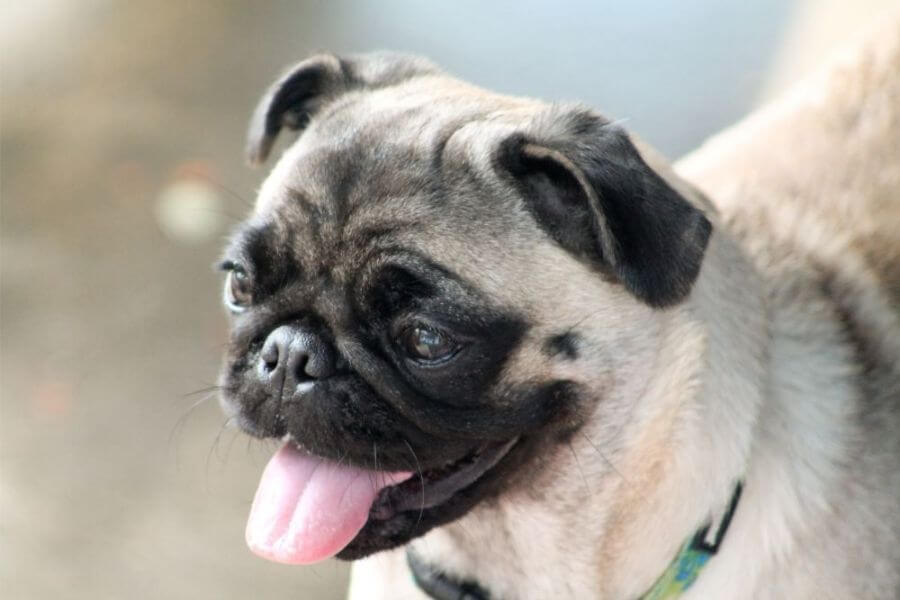
Exercise
While pugs aren’t high-energy like a mastiff, they still need regular activity to avoid pancreatitis and other health issues.
For pug puppies, follow the 5-minute rule: 5 minutes of exercise per month of age, twice daily.
Indoor activities can include gentle play with toys or teaching your puppy their name through fun games.
Be cautious about exercising your pug in hot weather as their flat faces make breathing difficult.
Regular visits to dog cafes or dog bakeries provide socialization while dog runs offer controlled environments for exercise.
Ensure your pug is properly vaccinated before visiting public areas where they might encounter dog poop or catch a cold.
Remember to check for fleas, groom regularly, and clean dog eye gunk to maintain health.
After exercise, reward your pug with low-calorie treats – if your dog’s not eating, consult a vet.
Many pug owners in Singapore and beyond find pet taxis convenient for trips to dog training schools or the vet for microchipping.
When you’re looking for a healthy pug puppy, consider these exercise needs as part of your commitment to their wellbeing.
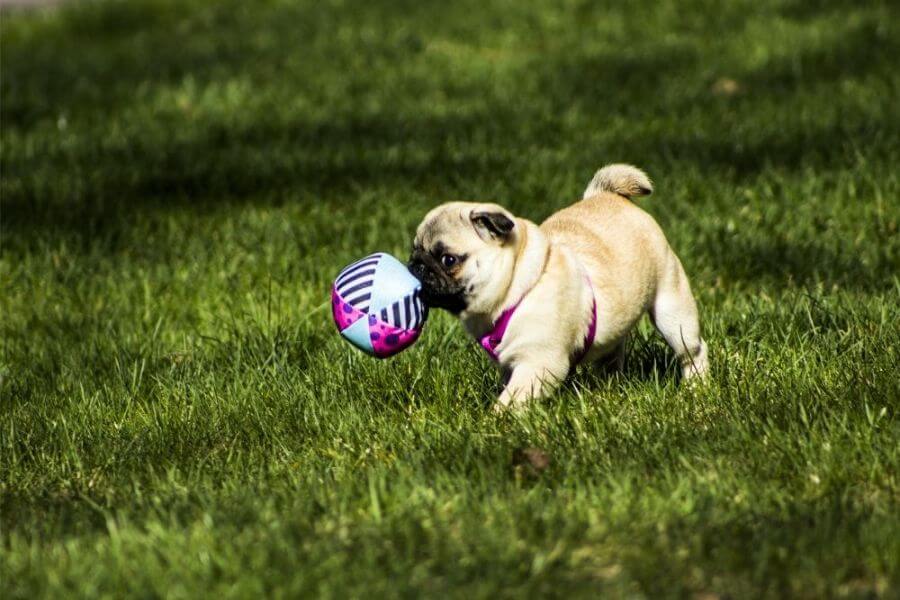
Training
You can enroll your pug puppy in professional dog training classes where experts do the heavy lifting, or tackle the training yourself with patience and consistency.
While pugs respond well to positive reinforcement, they’re notorious for selective listening when they’re not interested, which can be frustrating when teaching basic commands like “sit” or their puppy name.
Pugs thrive when socialized with various people, and interestingly, some pug puppies initially respond better to women than men.
Your pug dog will need proper care beyond training, including regular vaccinations, microchip insertion, fleas treatment, and nail trimming to ensure their health.
Pugs are small dogs with huge personalities.
They crave attention and will follow you around like shadows, whether you’re brushing your teeth with a toothbrush or caring for a child with a cold.
This affectionate nature makes them wonderful companions but can complicate obedience training initially.
Watch for signs your pug’s needing to relieve themselves, establish a consistent potty routine, and use the same spot outdoors.
Reward successes, avoid punishing accidents, maintain a consistent schedule, and consider crate training at night.
Keep treats handy during leash training, letting your pug smell the reward while walking beside you.
If you’re looking for a picky eater, pugs rarely disappoint!
Be vigilant about what they consume—a dog ate chocolate or dog ate grape situation requires immediate attention as these are toxic.
Most puppy mouthing is normal behavior, but biting from fear or frustration could signal future aggression issues.
If you notice your dog not eating or catching cold symptoms, consult a vet.
For Singapore pug owners, services like pet taxi or mudah.my can be helpful resources when needed.

Nutrition
As a new pug owner, you’re looking at providing 3-4 small meals daily for your puppy, gradually transitioning to twice daily feeding as they mature.
Pugs are known for their hearty appetites, so monitoring portion sizes is essential to prevent obesity, which can put pressure on their joints and require pain relief treatments later in life.
When introducing new food to your pug’s diet, transition gradually over 7-10 days to avoid digestive upset.
Your pug puppy should be fully vaccinated before socializing with other dogs, ensuring they stay healthy while having fun with furry friends.
Avoid feeding pugs from raised bowls as this may contribute to bloating, a serious condition requiring immediate veterinary attention.
Never feed your pug chocolate, xylitol-containing products, caffeine, onions, garlic, grapes, raisins, or salty snacks as these can be toxic and potentially fatal.
In pug Singapore communities, many owners recommend specific locally-available puppy foods that support the breed’s particular needs.
Remember that feeding time is also an excellent opportunity to teach puppy name recognition and basic commands.
Pay attention to your pug’s overall health during mealtimes – from their coat condition to their nail growth, as nutrition affects all aspects of their physical wellbeing.
A huge thank you to responsible pug breeders who start puppies on quality nutrition before they even come home with you.
For special occasions like birthdays, consider pug-friendly treats from pet bakeries, but always in moderation to maintain your precious pug’s healthy weight and vibrant energy.

Children And Other Pets
You’ll often see a pug puppy for sale advertised as “family-friendly,” and there’s good reason for this reputation.
When you’re looking for a companion that gets along with everyone, pugs truly shine.
Their playful nature means you’ll frequently catch your pug having fun with children of all ages, though supervision is always recommended.
Unlike some breeds with delicate areas, pugs are fairly sturdy, but teach children to avoid pulling their curly tails or stepping on their paws and nail area.
Pugs typically adapt well to other household pets, including cats and fellow dogs.
Their non-aggressive temperament makes them excellent additions to multi-pet households.
Remember that your pug’s health should be prioritized—ensure they’re fully vaccinated before introducing them to other animals.
Pug’s natural sociability means they often suffer from separation anxiety, so a home with other companions can actually benefit them.
Early socialization is crucial—take your pug puppy to puppy playdates or dog parks once properly vaccinated.
This creates a well-adjusted adult dog that confidently navigates social situations with both humans and animals.

Other popular breeds
CAVALIER KING CHARLES
CHIHUAHUA
WEST HIGHLAND TERRIER

